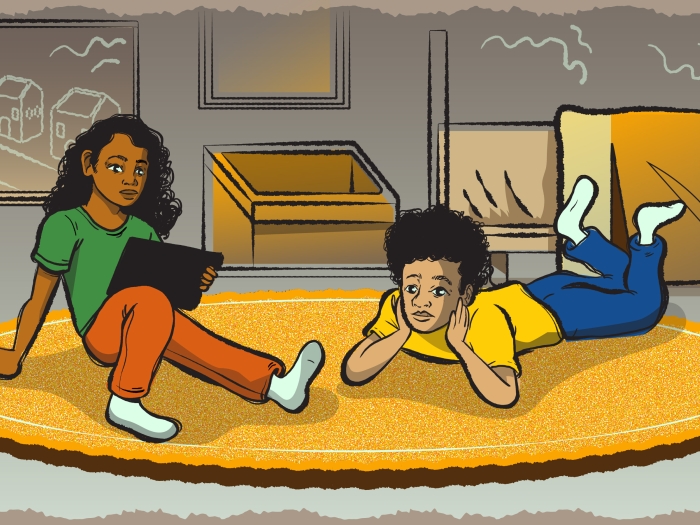But there are ways to reverse the trend
11:36 AM
Authors |

Firearm injuries are now the leading cause of death among United States children and teens following a huge decade long rise.
Analyses published by a research team in Boston found an 87% increase in firearm-involved fatalities among Americans under the age of 18 from 2011 to 2021.
Such an increase is obviously very concerning.
But as scholars of adolescent health and firearm violence, there are many evidence-based steps that elected officials, health care professionals, community leaders, school administrators and parents can implement to help reverse this trend.
Trends in firearm deaths
The latest study is based on data from the Centers for Disease Control and Prevention. This data also provides information on whether firearm deaths were the result of homicide, suicide or unintentional shootings.
Increases have been seen over time in all three areas.
The steepest increase has been in the rate of firearm homicides, which doubled over the decade to 2021, reaching 2.1 deaths per 100,000 children and teens, or about 1,500 fatalities annually.
Firearm-involved suicides have also increased steadily to 1.1 deaths per 100,000 children and teens in 2021.
Whereas the proportion of youth firearm-involved deaths due to unintentional shootings is typically highest during childhood, the share of gun deaths due to suicide peaks in adolescence.
In 2021, homicide was the most common form of firearm-involved deaths in almost every age group under the age of 18, with an exception of 12- and 13-year-olds, in which suicide was the leading cause of firearm fatalities.
Racial disparities in firearm deaths, which have been present for multiple generations, are also expanding, research shows.
Black children and teens are now dying from firearms at around 4.5 times the rate of their white peers.
This disparity is the consequence of structural factors, including the effects of systemic racism and economic disinvestment within many communities.
Addressing racial disparities in firearm-involved deaths will require supporting communities and disrupting inequity by addressing longterm underfunding in Black communities and punitive policymaking.
More research is needed to fully understand why firearm-involved deaths are universally increasing across homicide, suicide and unintentional deaths.
The COVID-19 pandemic and its exacerbation of social inequities and vulnerabilities likely explain some of these increases.
How to reduce gun fatalities
Reducing young people’s access to unsecured and loaded firearms can prevent firearm-involved deaths across all intents — including suicide, homicide and unintentional shootings.
Gun-owning parents can help by storing all firearms in a secure manner – such as in a locked gun safe or with a trigger or cable lock – and unloaded so they are not accessible to children or teens within the household.
Data shows that only one-third of firearm-owning households with teens in the U.S. currently store all their firearms unloaded and locked.
In addition to locking household firearms, parents should consider storing a firearm away from the home, such as in a gun shop or shooting range, or temporarily transferring ownership to a family member if they have a teen experiencing a mental health crisis.
Families, including those that don’t own firearms, should also consider how firearms are stored in homes where their children or teens may spend time, such as a grandparent’s or neighbor’s house.
Community-based and clinical programs that provide counseling on the importance of locked storage and provide free devices are effective in improving the ways people store their firearms.
In addition, researchers have found that states with child access prevention laws, which impose criminal liability on adults for negligently stored firearms, are associated with lower rates of child and teen firearm deaths.
Reducing the number of young people who carry and use firearms in risky ways is another key step to prevent firearm deaths among children and teens.
Existing hospital- and community-based prevention services support this work by identifying and enrolling youth at risk in programs that reduce violence involvement, the carrying of firearms and risky firearm behaviors.
While researchers are currently testing such programs to understand how well they work, early findings suggest that the most promising programs include a combination of reducing risky behaviors – through, for example, nonviolent conflict resolution; enhancing youth engagement in pro-social activities and with positive mentors; and supporting youth mental health.
Support structures
In addition to ongoing focused prevention efforts, hospital-, school- and community-based interventions that support youth in advancing social, emotional, mental, physical and financial health can reduce the risk of firearm deaths.
Such measures include both creating opportunities for children and teens – building playgrounds, establishing youth programs and providing access to the arts and green spaces – and community-level improvements, such as improved public transportation, economic opportunities, environmental safety conditions and affordable and quality housing. Allocating resources toward these initiatives is an investment in every community member’s safety.
Over the past decade there's been an 87% increase in firearm-involved fatalities among children and teens in the U.S. But there are also strategies and tools to stop and reverse this troubling trend.
This article is republished from The Conversation under a Creative Commons license. Read the original article.

Explore a variety of health care news & stories by visiting the Health Lab home page for more articles.

Department of Communication at Michigan Medicine
Want top health & research news weekly? Sign up for Health Lab’s newsletters today!





